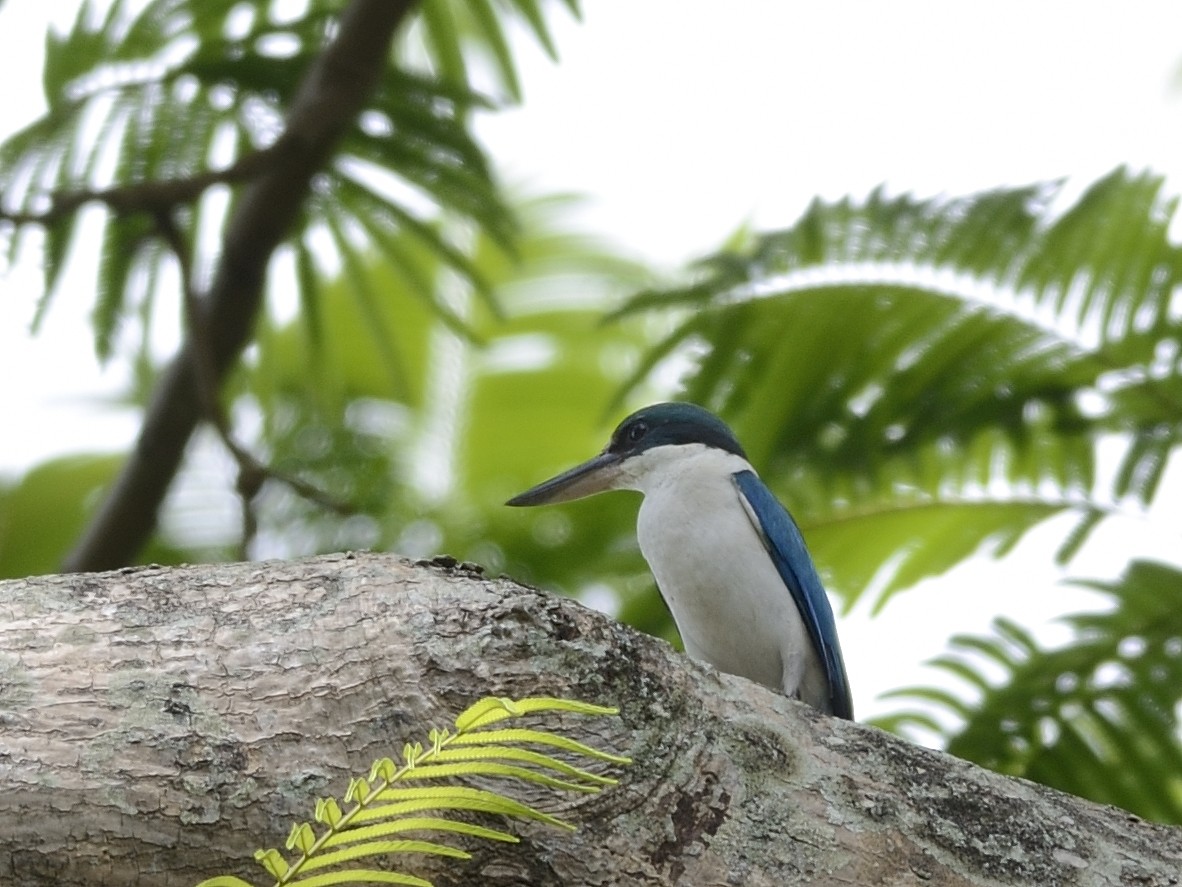Collared Kingfisher
A species of Australo-pacific Kingfishers Scientific name : Todiramphus chloris Genus : Australo-pacific Kingfishers
Collared Kingfisher, A species of Australo-pacific Kingfishers
Botanical name: Todiramphus chloris
Genus: Australo-pacific Kingfishers
Content
Description People often ask General Info
Description
The collared kingfisher is 23 to 25 cm (9.1 to 9.8 in) long and the male weighs 51 to 90 g (1.8 to 3.2 oz), while the female weighs 54–100 g (1.9–3.5 oz). It varies from blue to green above while the underparts can be white or buff. There is a white collar around the neck, giving the bird its name. Some races have a white or buff stripe over the eye while others have a white spot between the eye and bill. There may be a black stripe through the eye. The large bill is black with a pale yellow base to the lower mandible. Females tend to be greener than the males. Immature birds are duller than the adults with dark scaly markings on the neck and breast. It has a variety of calls which vary geographically. The most typical call is a loud, harsh and metallic "kee-kee-kee" repeated several times. 
Size
25 cm
Colors
Green
White
Blue
Life Expectancy
10 years
Nest Placement
Cavity
Feeding Habits
Collared Kingfisher primarily consumes crabs, shrimps, insects, spiders, earthworms, and small vertebrates. It hunts by perching still, diving to snatch prey, and returning to pound larger catch. It regurgitates indigestible parts as pellets.
Habitat
Collared Kingfisher prefer coastal regions, thriving in mangrove swamps and diverse habitats, from grasslands and open woodlands to urban gardens. Its widespread range encompasses northeast Africa, the Arabian Peninsula, and parts of Asia, occupying estuaries to inland waterways. In Southeast Asia, it adjusts to human-altered landscapes like suburban areas and agricultural zones. When unchallenged, collared Kingfisher can inhabit savannas to forested elevations up to 1500 meters.
Dite type
Carnivorous
People often ask
General Info
Feeding Habits
Bird food type
Distribution Area
It is most commonly found in coastal areas, particularly in mangrove swamps. It also inhabits farmland, open woodland, grassland and gardens. In some parts of its range, especially on islands, it can be seen further inland, ranging into forest or into mountain areas. Birds often perch conspicuously on wires, rocks or bare branches. The subspecies that occurs furthest west in the Eurasian/African landmass is T. c. abyssinica of north-east Africa, which is found in patches of mangroves in Eritrea and has also been recorded from Sudan and Somalia. Further east in Arabia is the endangered race T. c. kalbaensis with a population of 55 pairs or fewer; these are almost entirely restricted to Khor Kalba in the United Arab Emirates, but breeding has also occurred recently at Khor Shinas in Oman. Further subspecies occur locally around the coasts of India and Bangladesh and on the Andaman and Nicobar Islands. In Southeast Asia and Indonesia the species is widespread and common, occurring far inland in some regions. 
Species Status
Not globally threatened.
